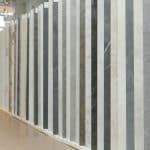In the face of increasing energy costs and growing concerns about the environment, finding energy-efficient solutions for heating your home is more critical than ever. One robust approach involves using non-electric heaters. These heating options harness the power of alternative and renewable resources, providing an efficient way to keep your space warm while reducing your carbon footprint. From wood-burning stoves to propane heaters, let’s take an in-depth view of the best non-electric heaters available, their unique features, their safety considerations, and how they can create a cosy, warm atmosphere in your home.
Wood-Burning Stoves
When you think of a cosy, inviting home, a wood-burning stove often comes to mind. These heaters have been a popular choice for decades, offering a unique blend of practicality and aesthetic appeal.
A lire également : What Are the Best Plants for Improving Air Quality in a Basement Living Space?
Wood-burning stoves offer an efficient heating solution for your home. They generate a significant amount of heat and do not rely on electricity, making them the perfect choice in power outages or for homes in remote areas. Despite their traditional image, many modern wood-burning stoves include features like airwash systems for clean glass and heat distribution fans.
However, safety should always be a priority when using a wood-burning stove. Ensuring the stove is installed by a professional, maintaining it correctly, and keeping a clear space around the heater will help prevent accidents.
Cela peut vous intéresser : What’s the Most Effective Way to Insulate a Converted Loft for Energy Savings?
Propane Heaters
Propane heaters are another viable solution for heating your home without relying on electricity. They are portable, making them ideal for heating specific spaces or rooms in your home, and are known for their impressive heat output.
When it comes to features, many propane heaters include adjustable thermostats, allowing you to control the temperature in your room with ease. Some also have built-in safety features like tip-over switches and oxygen depletion sensors, which automatically turn off the heater if it is knocked over or if oxygen levels in the room become dangerously low.
Like all heaters, propane heaters should be used with caution. Ensure they are placed in well-ventilated areas and keep them away from flammable materials.
Pellet Stoves
If you’re looking for an eco-friendly and efficient heating solution, consider pellet stoves. These heaters use compressed wood or biomass pellets as fuel, making them a renewable and sustainable choice.
Pellet stoves have a lot to offer in terms of features. They burn pellets at a slow and steady rate, providing a consistent warmth. Also, they often come with a hopper that feeds the pellets into the burn chamber, which means they can operate for a long time without needing a refill.
Safety is, as always, an important consideration. Pellet stoves should be installed by a professional to ensure proper ventilation, and regular maintenance is essential to keep them operating safely and efficiently.
Solar Air Heaters
Harnessing the power of the sun, solar air heaters provide an incredibly sustainable way to heat your home. These systems use solar panels to capture the sun’s energy, converting it into heat that is then distributed throughout your home.
Features of solar air heaters can include easy installation, automatic operation (they work whenever the sun is shining), and the ability to heat multiple rooms. Since they operate without electricity or fuel, you will see significant savings on your energy bills.
In terms of safety, solar air heaters pose little risk. However, it’s important to ensure they are correctly installed to maximize their efficiency and effectiveness.
Gas Space Heaters
Gas space heaters are an excellent choice for heating individual rooms or spaces in your home. They run on natural gas or propane and offer quick, efficient heating with the flip of a switch.
These heaters often have adjustable thermostats and multiple heat settings, allowing you to customize the heat output to your liking. Some models also come with safety features like automatic shut-off and tip-over protection.
As with other heaters, it’s crucial to use gas space heaters safely. They should be installed by a professional, and regular maintenance is necessary to ensure they continue to operate safely and efficiently.
Infrared Heater
An infrared heater is another popular non-electric alternative for home heating, providing heat directly to people and objects in the space without relying on air circulation. This method mimics the natural heat of the sun, making it a relatively energy-efficient choice.
Infrared heaters come packed with a variety of features. Some models include a remote control for easy operation, allowing precise temperature regulation from a distance. Others offer overheat protection mechanisms, designed to enhance safety by automatically shutting off the heater when it becomes too hot. In addition, many infrared heaters provide excellent heating performance, specifically targeting areas that need warmth the most.
However, like any heater, an infrared option should be used carefully. Proper safety measures such as maintaining a safe distance from the heater and keeping it away from flammable items should be a priority. Furthermore, it’s advisable to look for models that offer safety features such as tip-over switches to ensure a safer experience.
Kerosene Heaters
Kerosene heaters are a traditional form of heating that can be extremely effective, particularly in emergency situations or power outages. They work by burning kerosene fuel to provide heat, making them a more portable option than larger, stationary heaters.
One notable characteristic of a kerosene heater is its strong heating performance. Despite their compact size, these heaters can warm a large area efficiently. An adjustable thermostat is a common feature, allowing you to control the heat output according to your comfort level.
However, safety should be prioritized when using a kerosene heater. Proper ventilation is crucial to avoid the build-up of harmful fumes. Similarly, they should be placed on a stable surface to avoid any risk of tipping over. Regular maintenance, including checking the wick and replacing it as needed, is also key to safe and efficient operation.
Conclusion
In conclusion, there are plenty of non-electric heater options out there to meet your specific heating needs while minimizing your environmental impact. From wood-burning stoves and propane heaters to pellet stoves, solar air heaters, infrared heaters, and kerosene heaters, each offers unique benefits and features.
Safety should always be the primary consideration, so remember to ensure proper installation and maintenance. While the benefits of these heaters certainly include energy efficiency and environmental sustainability, they also offer a reliable heating solution in cases of power outages and emergencies.
So, whether you’re considering a renewable pellet stove, a portable propane heater, or an efficient infrared heater, making a switch to a non-electric option might be the solution you’re looking for to achieve a cosy, warm, and sustainable home.






